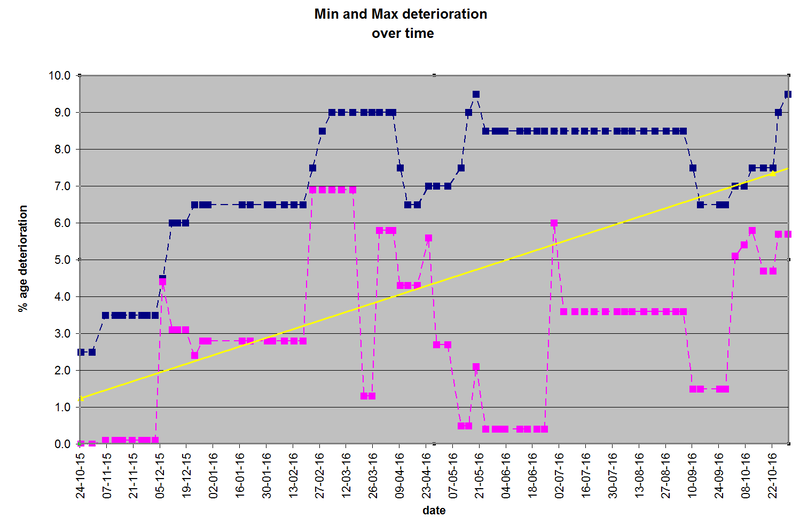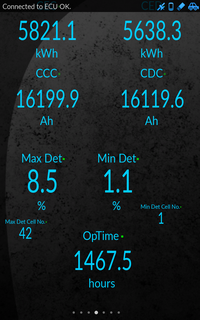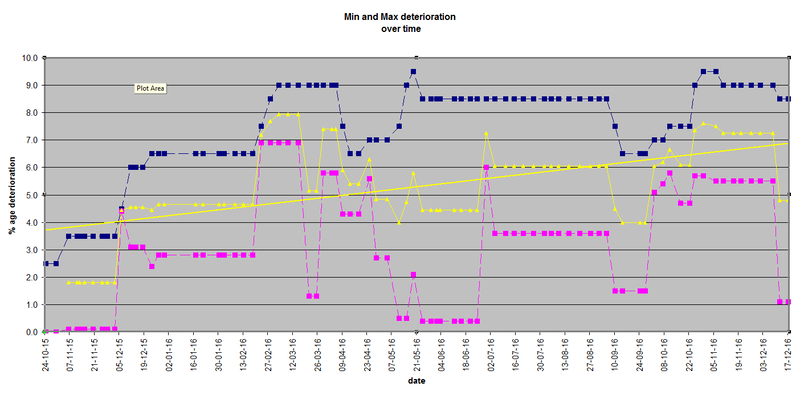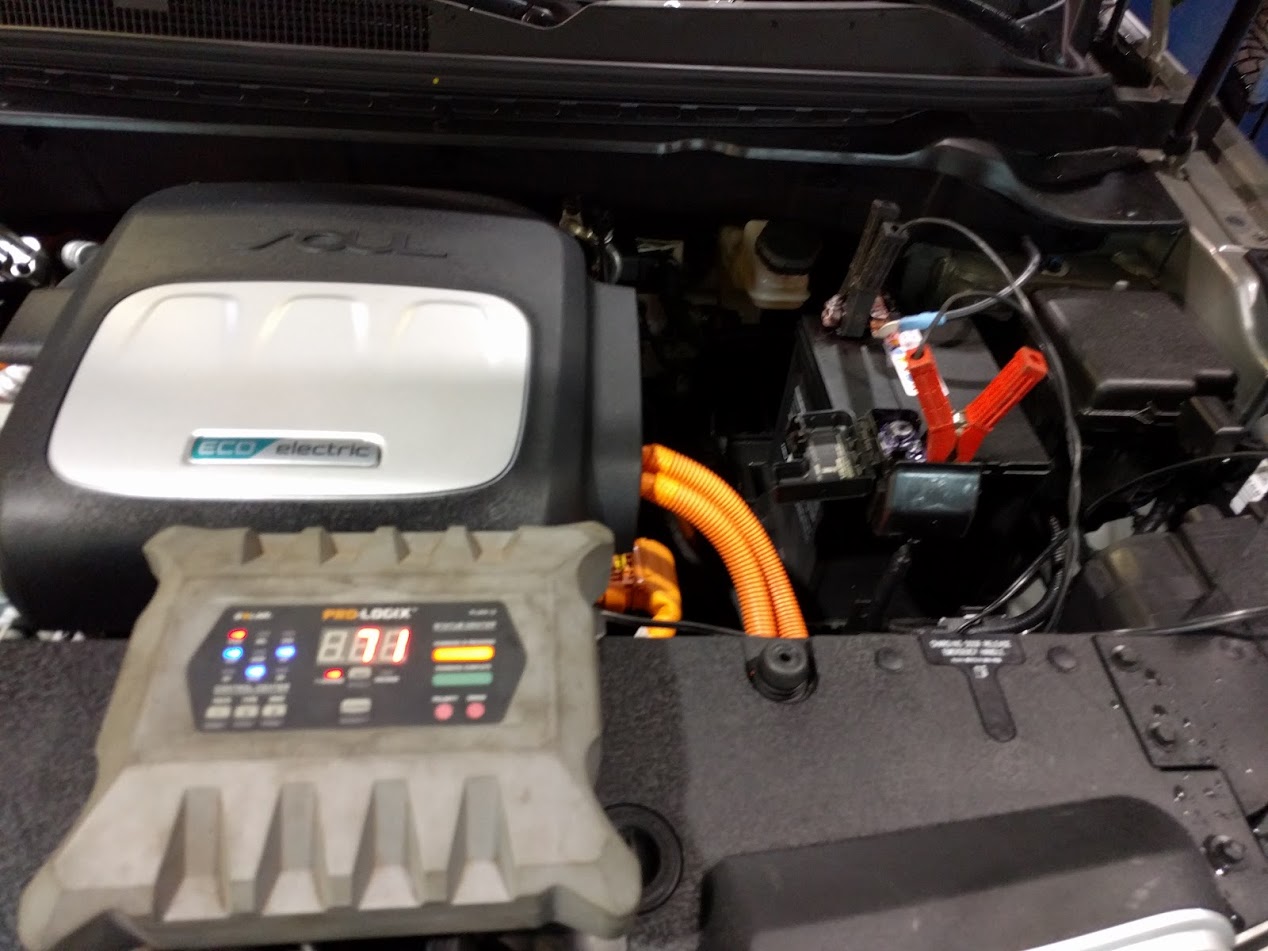2016Electric
Well-known member
JejuSoul said:No. That was a big jump downwards but that is not the first time I have seen this.You now join the rest of the pack. It's no longer worth making a ranking order because all our cars are pretty much the same (160,000km +/-10,000). Exceptions are zero deterioration new cars. And two outliers to the downside. ilectric who discusses his loss of range in the 26,000 mile thread. And Leafer who bought a demo car, which we assume was badly used/kept.mtndrew1 said:Looks like I'm no longer an outlier.
---------------------------
I charged from 7% to 100% last night as part of a calibration check.
Got 200km on the GOM for the first time in many months.

18 month old car 24,994km , max det 7.5%, min det 5.8%
Energy charged = 25.2 kWh => Full pack 25/0.925 = 27.24kWh
I am still confident that my car has 100% SOH
Not sure what you mean by 160,000km.. Do you mean projected mileage to 70% capacity?
One issue I see with these calculations is that the degradation of lithium ion batteries may not be linear. I was of the belief that the first 10% or so is usually lost quickly, then the loss slows. I could have sworn I've read that somewhere, but can't recall where at the moment.
Another issue I see is with the use of min and max degraded cell values. Sure, that's the lowest and highest cell, but what about each cell in between? Perhaps when the two value are close together, the difference may not be material and the average will be representative of the group of cells.. But when the numbers are spread out more, what happens if the max degraded value is an outlier?
Is there no way to poll the Ecu for individual cell stats?
Anyway, I guess time will tell how these packs hold up.









































